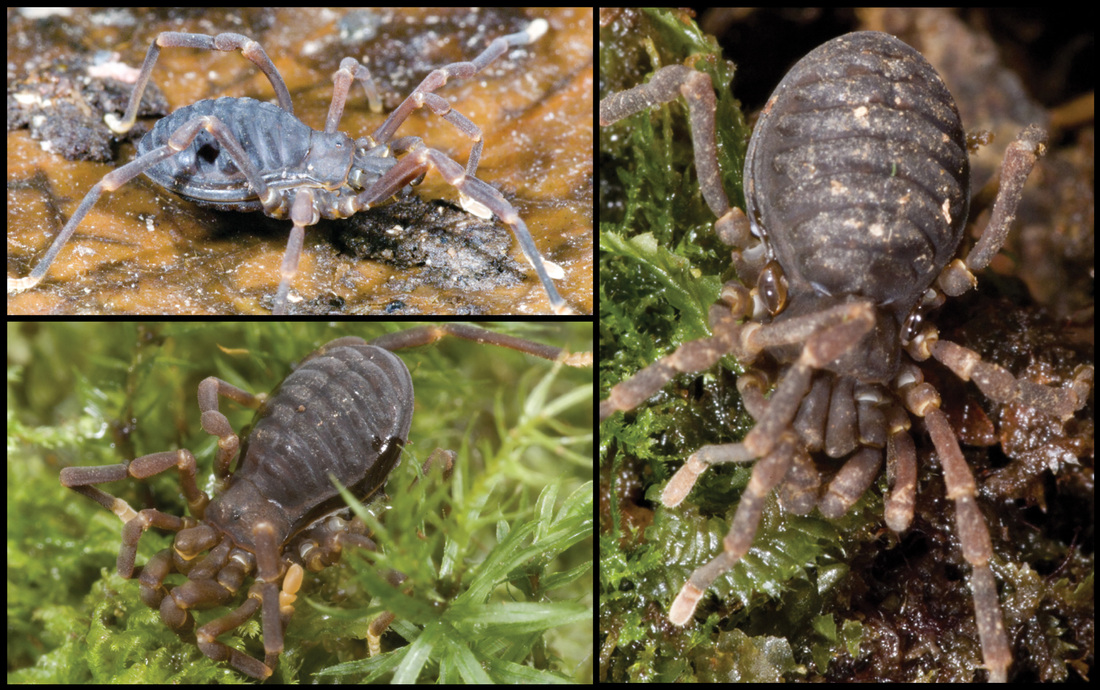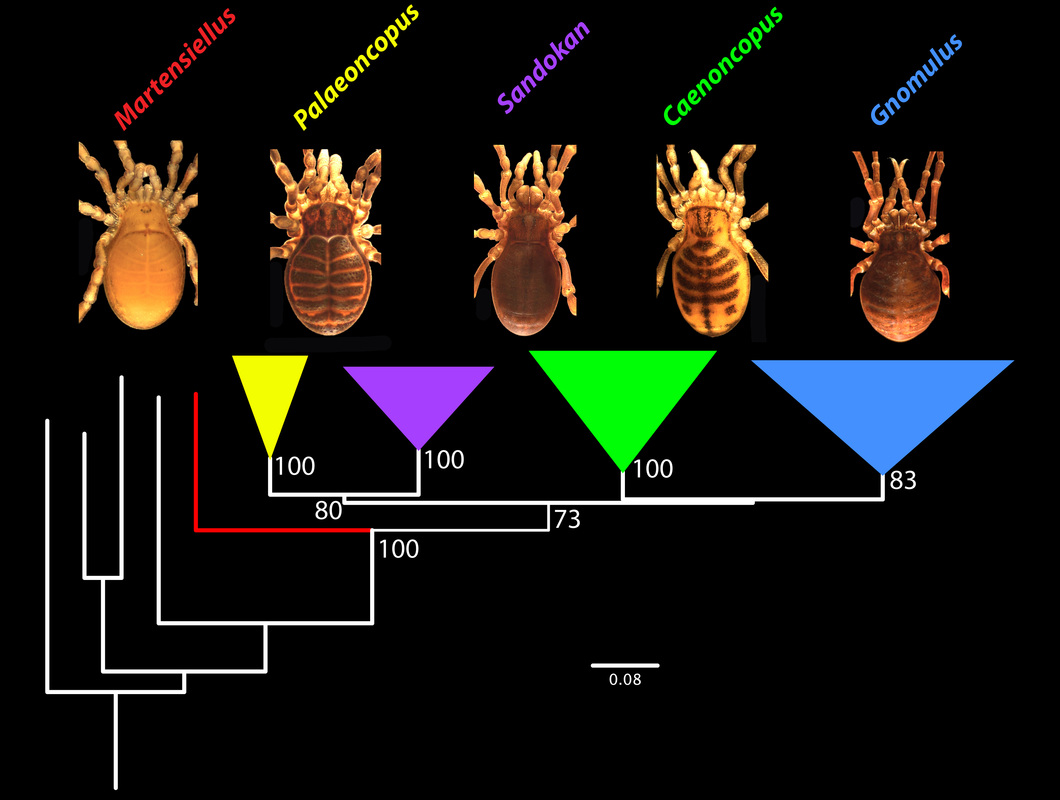Phylogeny and biogeography of
Sandokanidae (Opiliones, Laniatores)
Sandokanidae (Opiliones, Laniatores)
Sandokanids are endemic to Southeast Asia. They are cryptic animals that dwell in leaf-litter and almost all species are type-locality endemics.
There are six genera of Sandokanidae. The relationships of five of these, which were inferred from eight genes in a phylogenetic analysis, are as shown:
Their present distribution and ancient age indicate that their diversification in the Malay Archipelago has been greatly influenced by vicariance (continental breakup).



